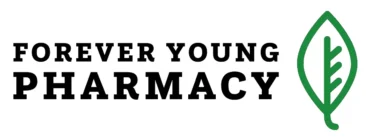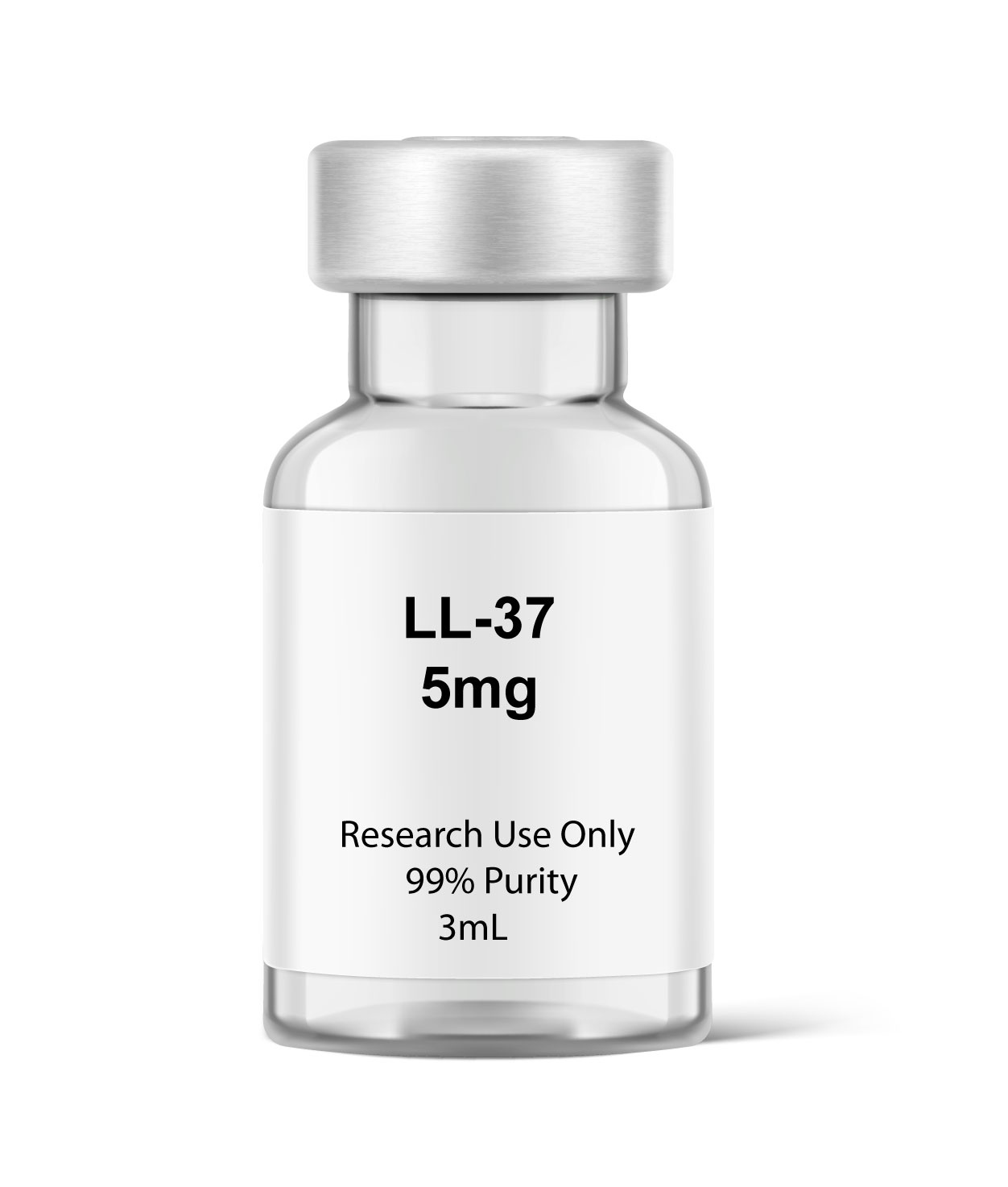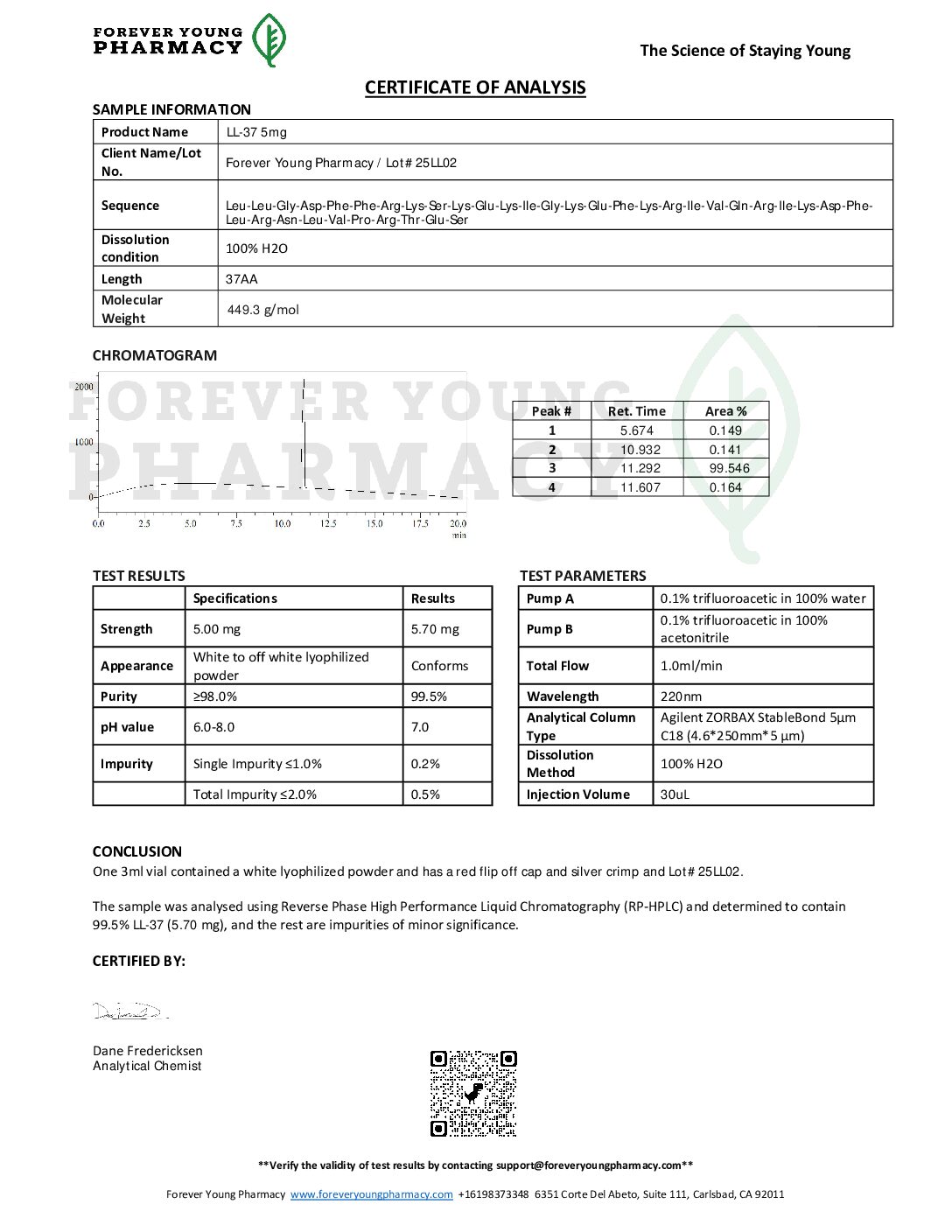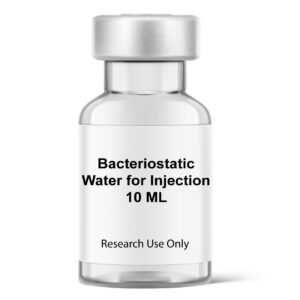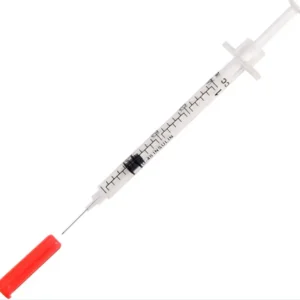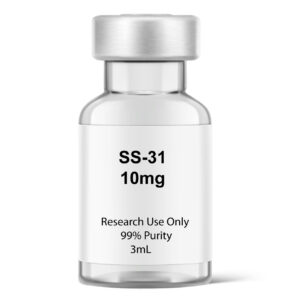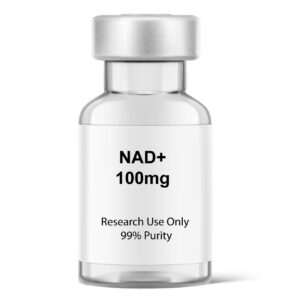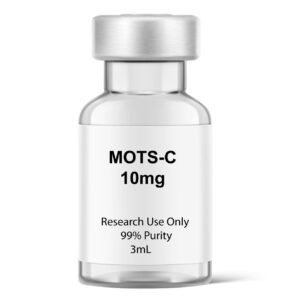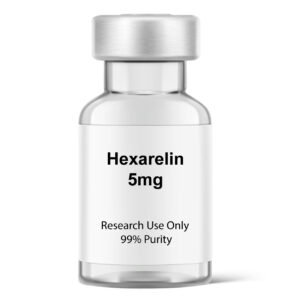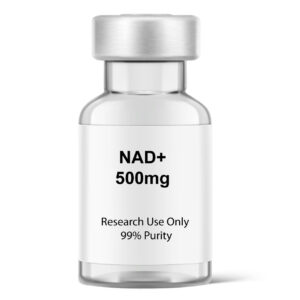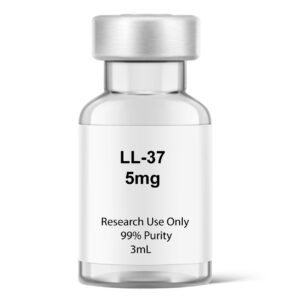Introduction to LL-37
LL-37 (Leucine-Leucine-37) is a 37-amino-acid cationic peptide and the only member of the cathelicidin family of antimicrobial peptides found in humans. It is enzymatically cleaved from the C-terminal of the precursor protein hCAP18 (human cationic antimicrobial protein 18). Originally discovered in human neutrophils, LL-37 is expressed in a wide range of cell types, including epithelial cells, monocytes, macrophages, T cells, and NK cells.
A key component of the innate immune system, LL-37 is known for its broad-spectrum antimicrobial activity, immune modulation, and wound-healing properties. It has garnered interest as a potential therapeutic alternative to antibiotics, especially in the context of antimicrobial resistance (AMR). LL-37 remains a research-use-only compound, as it is not approved for clinical use by the FDA, EMA, or other regulatory agencies.
Mechanism of Action
LL-37 functions through multiple biological pathways, including antimicrobial action, immune regulation, tissue repair, and even potential anti-tumor activity:
1. Antimicrobial Action
LL-37 disrupts microbial cell membranes through a non-classical mechanism distinct from barrel-stave or toroidal pore models. Instead, it lies parallel to the membrane, destabilizing the lipid bilayer and leading to microbial death. It also penetrates microbial cells to interact with intracellular targets, such as acyl carrier proteins, enhancing bactericidal efficacy.
LL-37 demonstrates activity against:
Gram-positive and Gram-negative bacteria (e.g., Staphylococcus aureus, E. coli, P. aeruginosa)
Drug-resistant strains (e.g., MRSA)
Fungi (e.g., Candida albicans)
Viruses (e.g., HSV, RSV, Influenza A)
2. Immune Modulation
LL-37 binds receptors such as FPRL1 (formyl peptide receptor-like 1) to attract immune cells (monocytes, neutrophils, T cells). It regulates TLR (Toll-like receptor) signaling, suppressing pro-inflammatory cytokines (e.g., TNF-α, IL-4) while increasing anti-inflammatory markers like IL-10. This balance helps prevent hyperinflammation while supporting immune defense.
3. Anti-Biofilm Activity
LL-37 is capable of disrupting biofilms, structures that protect microbial colonies from antibiotics. This makes LL-37 especially valuable in chronic infection research (e.g., chronic wounds, cystic fibrosis, otitis media).
4. Wound Healing
LL-37 accelerates tissue repair by promoting:
Angiogenesis (new blood vessel growth)
Epithelial cell migration and proliferation
Collagen production
These effects are mediated via the EGFR and MAPK/ERK pathways.
5. Anti-Cancer Potential
LL-37 exhibits context-dependent effects on cancer:
Inhibits growth and promotes apoptosis in some cancers (e.g., colon, gastric) through BMP (bone morphogenetic protein) signaling.
May promote progression in other cancers (e.g., ovarian, lung), highlighting the need for targeted research.
Key Research Areas of Using LL-37
Based on in vitro and animal model studies, LL-37 has demonstrated potential in the following research applications:
Broad-Spectrum Antimicrobial Activity
• Effective against bacteria, fungi, and viruses, including antibiotic-resistant strains.Anti-Biofilm Properties
• Disrupts microbial biofilms, improving antibiotic access and reducing microbial persistence in chronic infection models.Immunomodulatory Effects
• Regulates pro- and anti-inflammatory cytokine expression, offering potential for studying immune balance and inflammation pathways.Wound Healing Support
• Promotes angiogenesis, collagen production, and epithelial regeneration in rodent injury models.Potential Anti-Tumor Activity
• Exhibits selective cytotoxicity toward certain tumor cells in preclinical settings; effects are context- and dose-dependent.Support in Chronic Infection Models
• May assist immune clearance and reduce microbial burden in models of persistent infection, such as cystic fibrosis-related conditions.
Note: LL-37 is intended for laboratory research only and is not approved for human or veterinary use. Limitations observed in research include protease degradation, high synthesis costs, and dose-dependent cytotoxicity. Clinical application remains investigational and is not endorsed for diagnostic or therapeutic purposes.
Certificate of Analysis
The following technical details outline the properties of LL-37 5mg, providing a scientific snapshot of the peptide.
Property | Description |
|---|---|
Chemical Sequence | Leu-Leu-Gly-Asp-Phe-Phe-Arg-Lys-Ser-Lys-Glu-Lys-Ile-Gly-Lys-Glu-Phe-Lys-Arg-Ile-Val-Gln-Arg-Ile-Lys-Asp-Phe-Leu-Arg-Asn-Leu-Val-Pro-Arg-Thr-Glu-Ser |
CAS Number | 154947-66-7 |
Molecular Formula | C205H340N60O53 |
Molecular Weight | 4493.33 g/mol |
Appearance | White Lyophilized Powder |
Research Use Only
LL-37 5mg is supplied strictly for laboratory research purposes. It is not intended for human consumption, clinical diagnosis, or therapeutic use. All users must adhere to proper safety protocols and local regulations.
